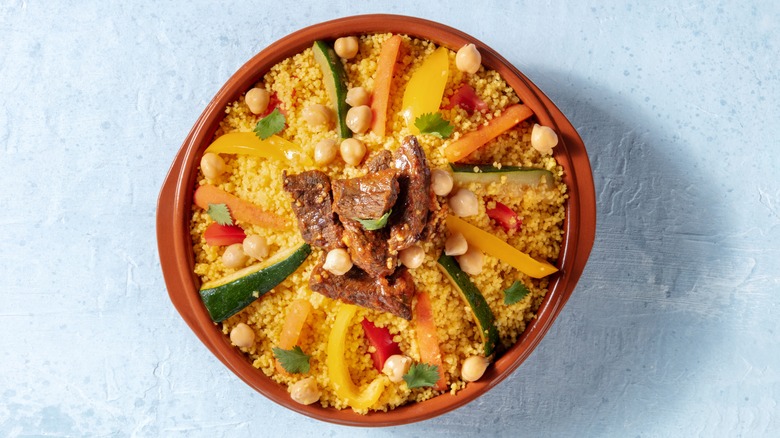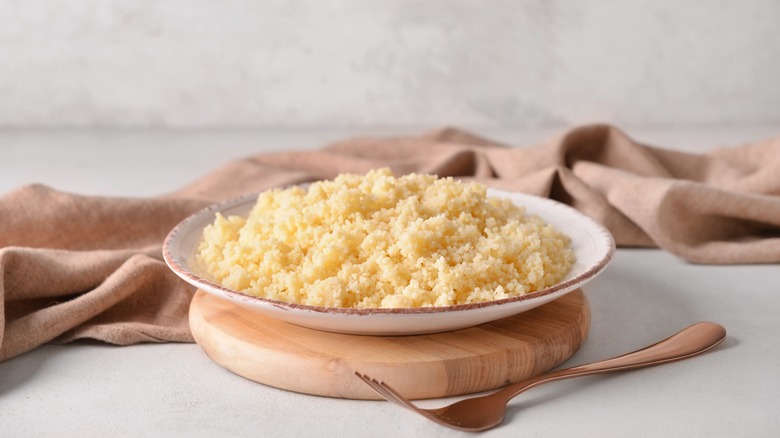The Mistake Everyone Makes While Fluffing Couscous
Making couscous is an art — and achieving a flawless fluff is something that can only come with technique and experience. So, if you're frequently catching yourself comparing your homemade batch to the plate of Moroccan couscous you had in Marrakesh, you should try not to be too hard on yourself. After all, the culinary methods behind couscous, or as it's known in Morocco, "smida," originated there with the indigenous Berber people, and have been passed down and perfected over the course of 2,000 years. All of this has come to show that fluffing your couscous is essential to achieving the perfect texture, and it entails much more than simply sticking a fork in your pot and stirring.
From the kind you buy to how you fluff it, a lot goes into a good pot of couscous — and a lot more can go wrong than you'd think. This simple-looking grain, that's actually pasta, isn't simply meant to be boiled and strained as your spaghetti or vermicelli might be. No, a good couscous requires the right type of dish, the right amount of liquid at the right temperature, and the right seasoning. However, all of that effort can go to waste if you're not utilizing the right fluffing method.
The right way to fluff your couscous
The key culprit of a clumpy couscous is improper fluffing. In order to achieve that distinct couscous texture — the one where you can distinguish each individual granule as you chew — you'll have to dedicate a bit more effort to fluffing it. For that, you can save yourself the chore of washing another fork and instead use a couple of tools you were born with: your own two hands. That's right, once your couscous has finished steaming, you can go right in with your hands to break up the clusters. Simply pour the couscous into a rimmed baking sheet lined with a clean kitchen towel, spray it with a bit of water, or drizzle it with some olive oil for extra flavor, and use your fingers to separate the grains. The water, or the olive oil should you go that route, will help every individual granule go its separate way, creating that unmistakably fluffy and discreet texture that couscous is known for.
As long as you follow the other steps for preparing couscous, mastering your fluffing technique will result in a perfect batch that instantly elevates any and all of the dishes you add it to — whether that be as a side, a traditional tagine, or in an Isreali couscous salad.

